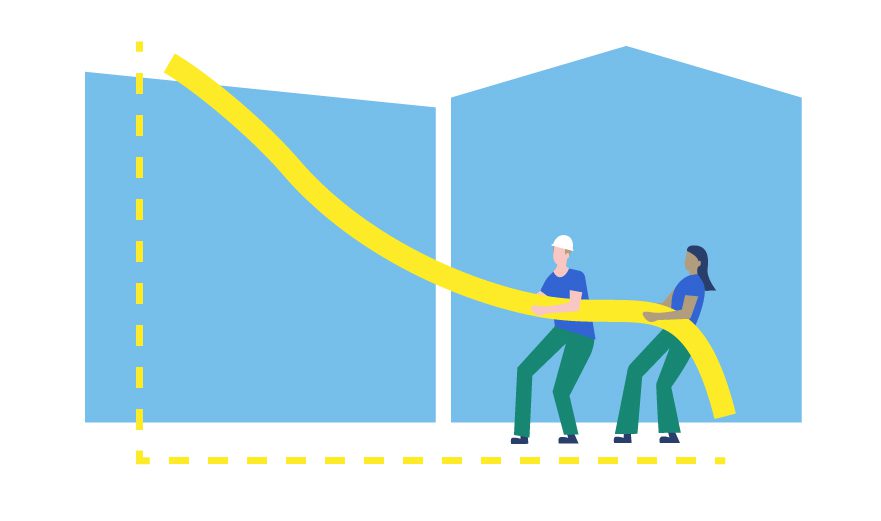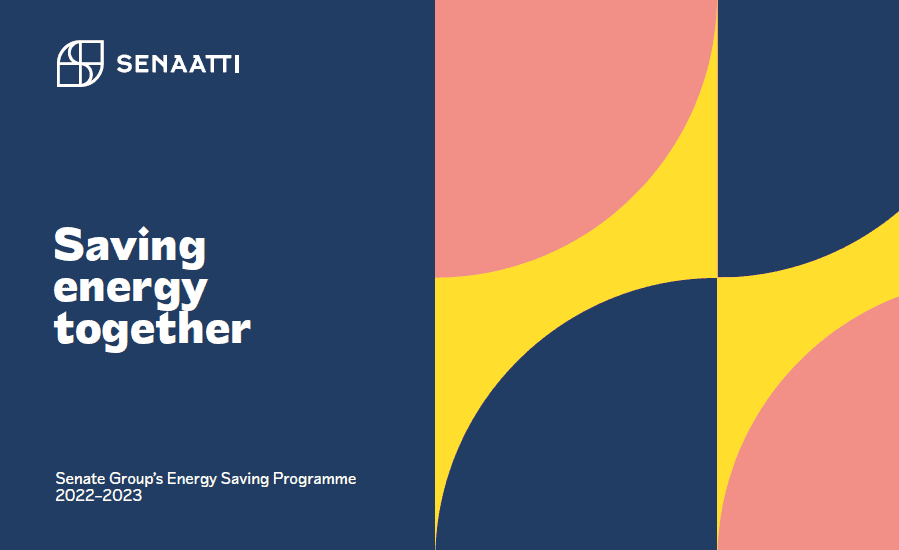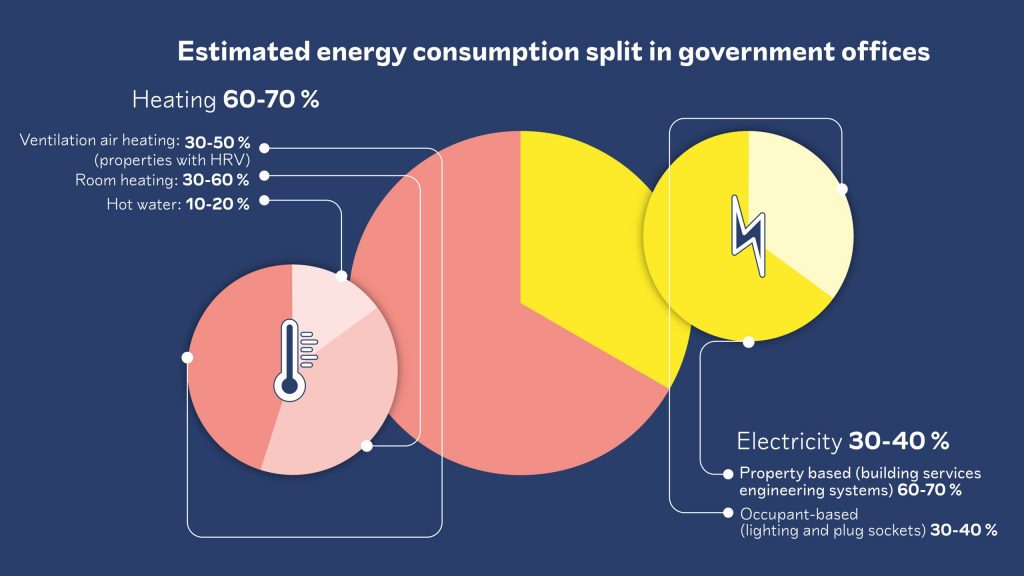
Energy Saving Programme
Exceptional times call for decisive action. As an energy crisis threatened Finland in autumn 2022, we launched an extensive Energy Saving Programme in government premises to a fast schedule. Our aim was to help Finland get through a challenging winter on the energy markets and to curb the sharp rise in energy costs. The programme outperformed targets and we are still benefiting from its results.
Savings in energy costs reflect in lower government rents
The Energy Saving Programme in government premises exceeded the targets set and delivered even higher savings than expected. By year-end 2023, almost 100,000 MWh savings in heat and electricity had been achieved. This translates into savings of around €12 million in energy costs.
The Energy Saving Programme developed and introduced new operating models and technology for demand-side management. In addition, Senate sought new ideas for improving energy efficiency from clients and the Group’s own employees.
The new practices now continue as part of Senate’s normal processes. The Energy Saving Programme has delivered permanent savings in government energy costs and this in turn will contribute to significant rent reductions for government agencies from the beginning of 2025.
Pillars of the Energy Saving Programme

Building services engineering systems

Customer engagement

Demand-side management

New energy-saving solutions

Find out more about our Energy Saving Programme
Click on the link below to download our Energy Saving Programme and find out more about our energy-saving measures for the 2022/2023 winter.
The ultimate aim of the programme is to cut energy consumption by between 50,000 and 75,000 MWh, which is equivalent to the annual energy consumption of 10,000 one-bedroom flats. The savings in energy costs will be as high as EUR 10 million. The programme started at the beginning of October 2022, and the measures and their duration will vary from one property to the next. The changes will not affect indoor air quality. The temperature and other settings in our properties always comply with Finnish Indoor Climate Standards.

Working together towards our goals
Our Energy Saving Programme is designed to engage our customers and get them involved in our efforts to save energy. As our tenants, they are in an excellent position to provide us with information about, for example, which rooms in their building are only used occasionally and to identify areas and systems that could be used more efficiently from the perspective of energy consumption.
Using each room for a purpose that fits its size and other characteristics is essential for achieving optimal energy performance. In any property, it is the occupants who know best how each room is used and who are therefore in the best position to identify ways to save energy. Input from the occupants is invaluable for our efforts, which is why we are urging all our customers to actively think of new ways to lower their energy consumption and to take action.

Questions and answers
How will the drop in temperature affect indoor air quality? What kinds of measures are recommended in the event of electricity shortages or power cuts?
Click on the link below for answers to frequently asked questions about our Energy Saving Programme.
Enquiries:
 Sanna Jääskeläinen
Sanna Jääskeläinen
Programme Coordinator, Marketing and Communications Director
tel. +358 40 830 8104
 Tapio Jalo
Tapio Jalo
Specialist, HVAC, Automation and Energy
tel. +358 40 546 6775
 Pasi Pipatti
Pasi Pipatti
Specialist, Indoor Climate and Energy Use
tel. +358 40 078 7961
